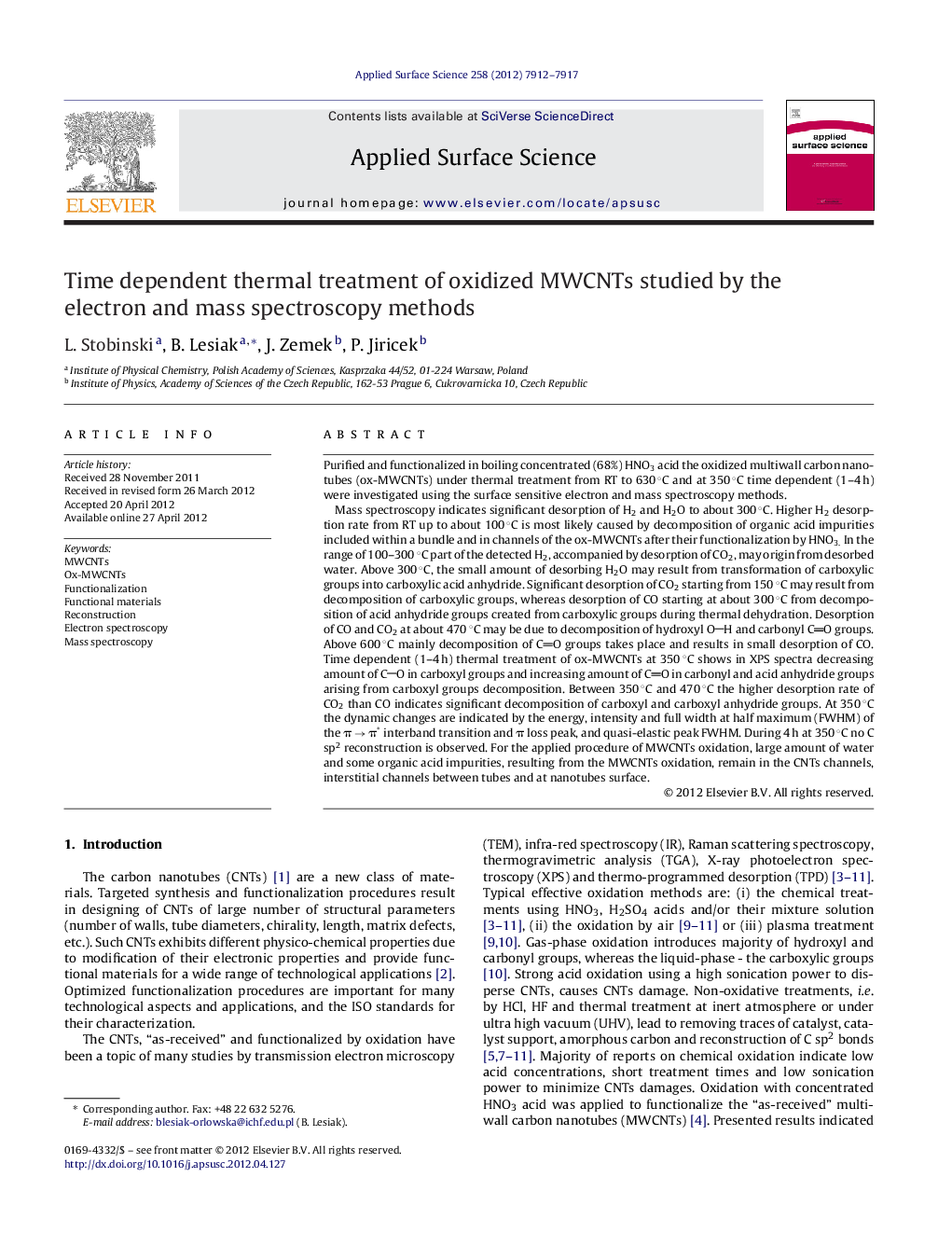| کد مقاله | کد نشریه | سال انتشار | مقاله انگلیسی | نسخه تمام متن |
|---|---|---|---|---|
| 5361709 | 1388276 | 2012 | 6 صفحه PDF | دانلود رایگان |

Purified and functionalized in boiling concentrated (68%) HNO3 acid the oxidized multiwall carbon nanotubes (ox-MWCNTs) under thermal treatment from RT to 630 °C and at 350 °C time dependent (1-4 h) were investigated using the surface sensitive electron and mass spectroscopy methods.Mass spectroscopy indicates significant desorption of H2 and H2O to about 300 °C. Higher H2 desorption rate from RT up to about 100 °C is most likely caused by decomposition of organic acid impurities included within a bundle and in channels of the ox-MWCNTs after their functionalization by HNO3. In the range of 100-300 °C part of the detected H2, accompanied by desorption of CO2, may origin from desorbed water. Above 300 °C, the small amount of desorbing H2O may result from transformation of carboxylic groups into carboxylic acid anhydride. Significant desorption of CO2 starting from 150 °C may result from decomposition of carboxylic groups, whereas desorption of CO starting at about 300 °C from decomposition of acid anhydride groups created from carboxylic groups during thermal dehydration. Desorption of CO and CO2 at about 470 °C may be due to decomposition of hydroxyl OH and carbonyl CO groups. Above 600 °C mainly decomposition of CO groups takes place and results in small desorption of CO. Time dependent (1-4 h) thermal treatment of ox-MWCNTs at 350 °C shows in XPS spectra decreasing amount of CO in carboxyl groups and increasing amount of CO in carbonyl and acid anhydride groups arising from carboxyl groups decomposition. Between 350 °C and 470 °C the higher desorption rate of CO2 than CO indicates significant decomposition of carboxyl and carboxyl anhydride groups. At 350 °C the dynamic changes are indicated by the energy, intensity and full width at half maximum (FWHM) of the Ï â Ï* interband transition and Ï loss peak, and quasi-elastic peak FWHM. During 4 h at 350 °C no C sp2 reconstruction is observed. For the applied procedure of MWCNTs oxidation, large amount of water and some organic acid impurities, resulting from the MWCNTs oxidation, remain in the CNTs channels, interstitial channels between tubes and at nanotubes surface.
Highlights⺠Purified and functionalized in HNO3 ox-MWCNTs - thermal properties. ⺠Electron spectroscopy (XPS, REELS) and mass spectroscopy. ⺠Desorption of H2, H2O, CO and CO2. ⺠Decomposition of COOH, C(O)O(O)C, COH, CO groups and organic acid impurities. ⺠Water and organic acid impurities remain mainly at the surface.
Journal: Applied Surface Science - Volume 258, Issue 20, 1 August 2012, Pages 7912-7917